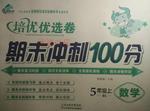��Ŀ����
����Ŀ���ٶ�Ӣ�������ʦҪ��ͬ��֮�佻��������,��������ͬ��д���������ġ��� �й���10�����Դ���,ÿ���������������ÿ��������漰һ�����ʵ����ӡ�ɾ���� �ġ�
����:��ȱ�ʴ���һ��©�ַ���(�� )������������д���üӵĴʡ�
ɾ��:�Ѷ���Ĵ���б��(\)������
��:�ڴ��Ĵ��»�һ����,���ڸô�����д���ĺ�Ĵʡ�
ע�⣺1 .ÿ���������ľ�����һ�ʣ�
2.ֻ������10��������(�ӵ�11����)���Ʒ֡�
The other day, we were playing basketball together when Mike and Bill bumped into each other, tried to catch the ball. Then he started shouting and yelling and it soon turned into terrible quarrel. Just then Jack went up to them and said something at a low voice. Almost at the same time, Mike and Bill all said ��sorry�� and shook hand with each other.
Do you know what did Jack said? ��Nothing��s sweet than forgiveness.�� Yes, what we can learn from the story is forgiveness, what is a most beautiful form of love and help us to live together in harmony whatever happens.
���𰸡�1. tried �� trying
2. he �� they
3. ��terrible quarrelǰ��a
4. at �� in
5. all �� both
6. hand �� hands
7. ȥ��did
8. sweet �� sweeter
9. what �� which
10. help �� helps
��������
����һƪ�����ġ������������ڴ�����ʱ��Mike��Bill������ִ����JackȰ˵�±˴�ԭ�µĹ��¡�
1. �����ν�ﶯ�ʡ���ν�ﶯ�ʡ�try���������Mike and Bill��֮����������ϵ��Ӧ�������ڷִʡ��ʽ�tried��Ϊtrying��
2. ������ʡ������Ŀ�֪Mike��Billײ��һ���ˣ��˴����ʴ�ָ���������ˣ��Ҵ˴������ھ��������Ӧ���ô�������they���ʽ�he��Ϊthey��
3. ���鲻���ڴʡ��˴���ʾ����һ�ܣ��Ƿ�ָ�������ڴ�a�������ʶ���terrible quarrel����terrible����ĸ�ķ���Ϊ�������ء�����terrible quarrelǰ��a��
4. ����̶����䡣�̶�����in a low voice��Ϊ�����������ʽ�at��Ϊin��
5. ������ʡ�all��Ϊ�����������������������ϣ�both��Ϊ�����߶�������������֮�䡣�˴������ǡ�Mike and Bill�����������ˡ��ʽ�all��Ϊboth��
6. ����̶����䡣����shake hands��Ϊ�����֡����ʽ�hand��Ϊhands��
7. �������Ӿ䡣�������ӳɷֿ�֪����what did Jack said�������ʡ�know���ı���DZ���Ӿ䣬����Ӿ�Ӧ���dz������ʽ�didȥ����
8. �������ݴʱȽϼ������ݾ��йؼ��ʡ�than����֪�˴�Ӧ�������ݴ�sweet�ıȽϼ�sweeter���ʽ�sweet��Ϊsweeter��
9. ����������Զ���Ӿ䡣�������ӳɷֿ�֪������Ϊ�������Զ���Ӿ䣬���д���ǰ�ߵġ�forgiveness����ָ��ڴӾ��������Ӧ���ù�ϵ��which�������ʽ�what��Ϊwhich��
10. ������νһ�¡��������ӳɷֿ�֪��ʱ̬Ϊһ������ʱ�����е������ǹ�ϵ��which��Ҳ�������д�forgiveness��forgiveness��Ϊ��ԭ�¡����Dz��������ʣ�������νһ��ԭ��ν�ﶯ��Ӧ����һ������ʱ�ĵ�����ʽ���ʽ�help��Ϊhelps��

 ���ƽ̸�������ѡ����ĩ���100��ϵ�д�
���ƽ̸�������ѡ����ĩ���100��ϵ�д�